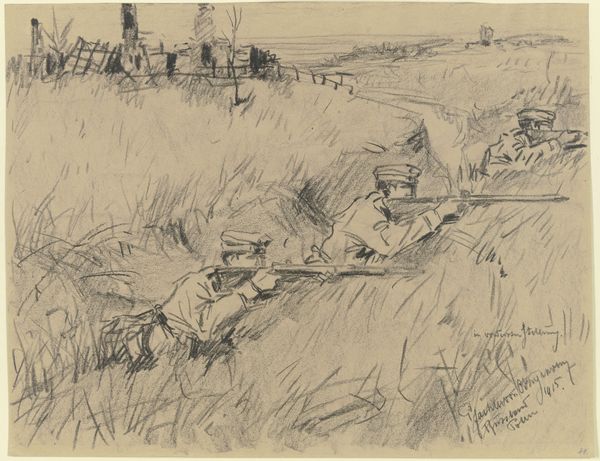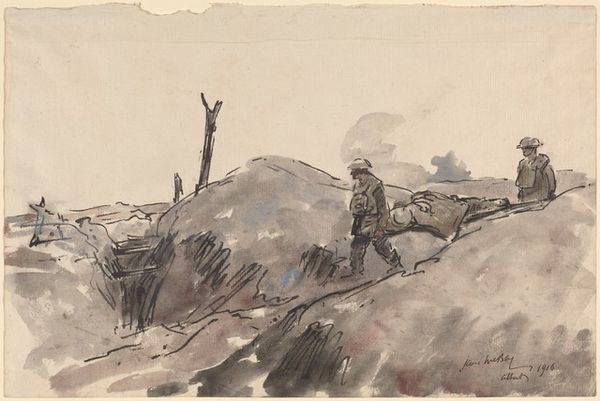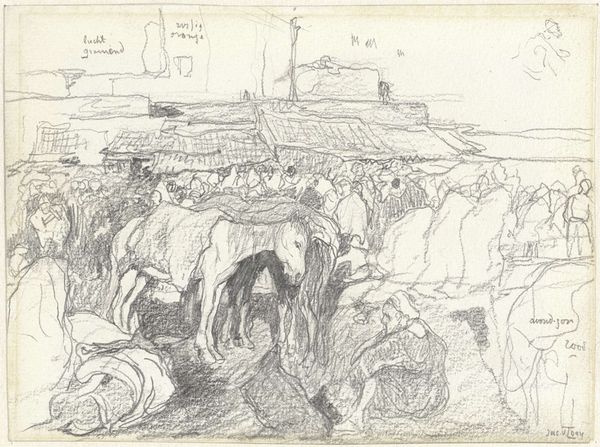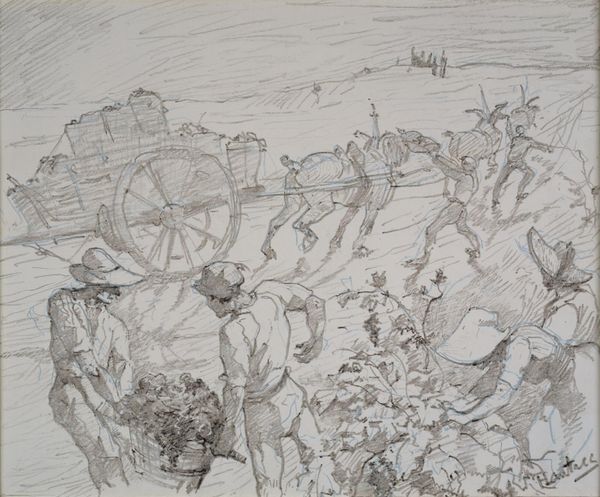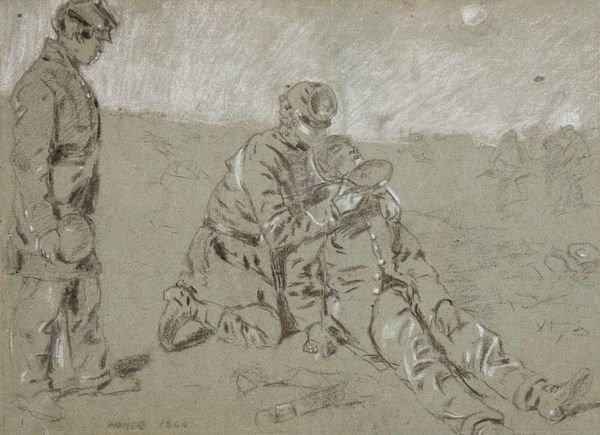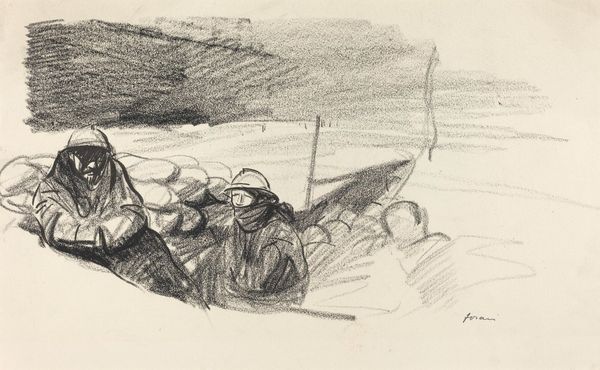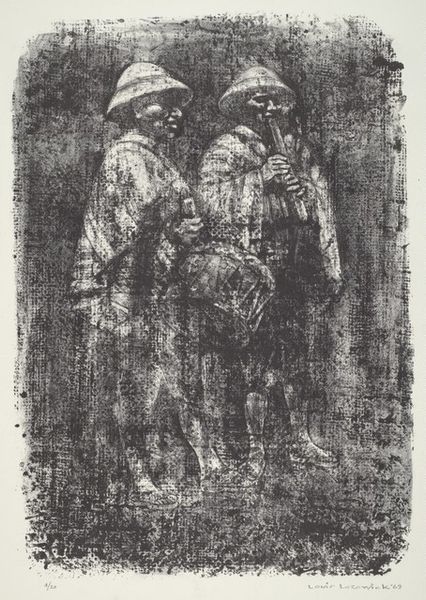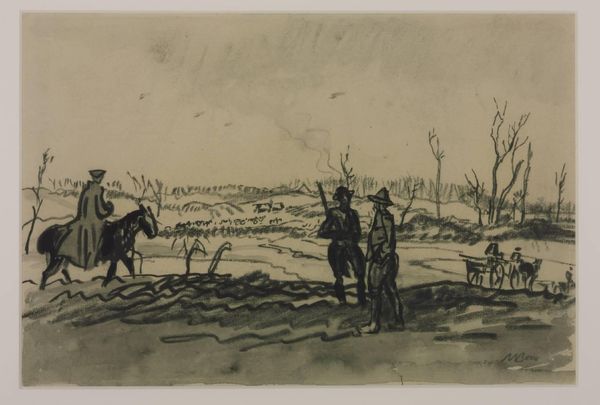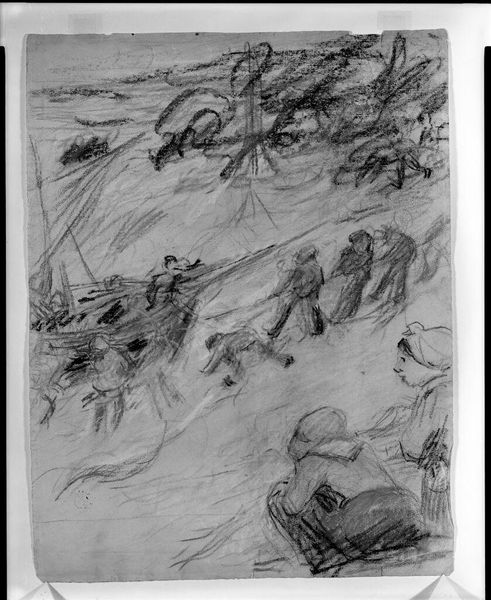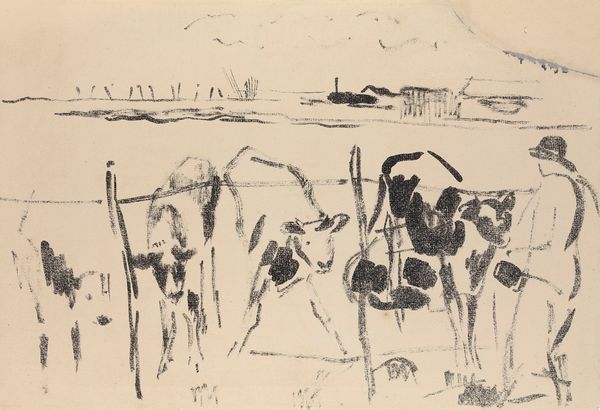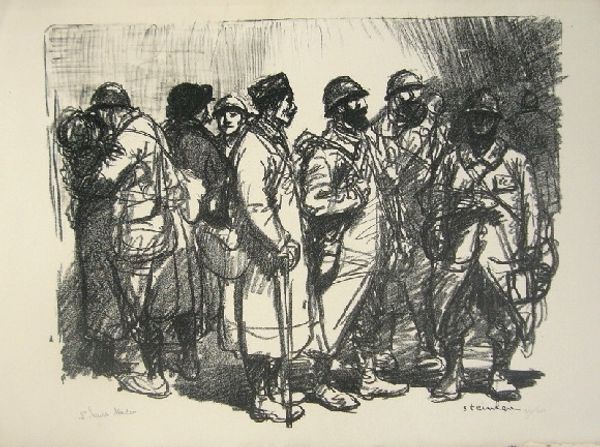
Copyright: Public domain
Editor: This is Théophile Alexandre Steinlen’s "Vent d'est," created in 1916 using pencil and charcoal. It’s a sketch, really, and the bleakness of it is immediately striking – the way the artist captured the weight these soldiers carry is profound. How do you interpret this work? Curator: This image is drenched in the cultural memory of World War I. Consider how Steinlen uses the "East Wind" – Vent d'est – not merely as a title, but as a symbol. Winds in art often represent change, upheaval, or even divine breath. In this context, what does the east wind bring? It blows toward France from Germany on the Western front. It's the physical manifestation of conflict itself, isn't it? Editor: Absolutely. It's a chilling wind. The artist's line work further emphasizes that sense of unease and distress, wouldn’t you agree? Curator: Precisely! Look at the subtle romanticism inherent in the medium itself. Sketching allows a raw emotionality. But note also, how the sketched destruction in the distance mirrors something internal to the soldiers – a kind of inner ruin? How do we carry conflict inside us, and what symbols might Steinlen use to demonstrate that? Editor: I see that. Their posture, hunched and weary. It’s not just physical weight; it's psychological. Curator: The helmets hide their faces, reducing their individual humanity, making them representations of universal suffering and perhaps, universal guilt. Editor: That makes so much sense, particularly when thinking about collective trauma and memory. I had been overlooking the visual motifs, the symbolic power of those artistic choices. Curator: And remember, it's through recognizing and interpreting those motifs, those carriers of cultural memory, that we gain a fuller understanding. I’ve learned even more about it with you.
Comments
No comments
Be the first to comment and join the conversation on the ultimate creative platform.
